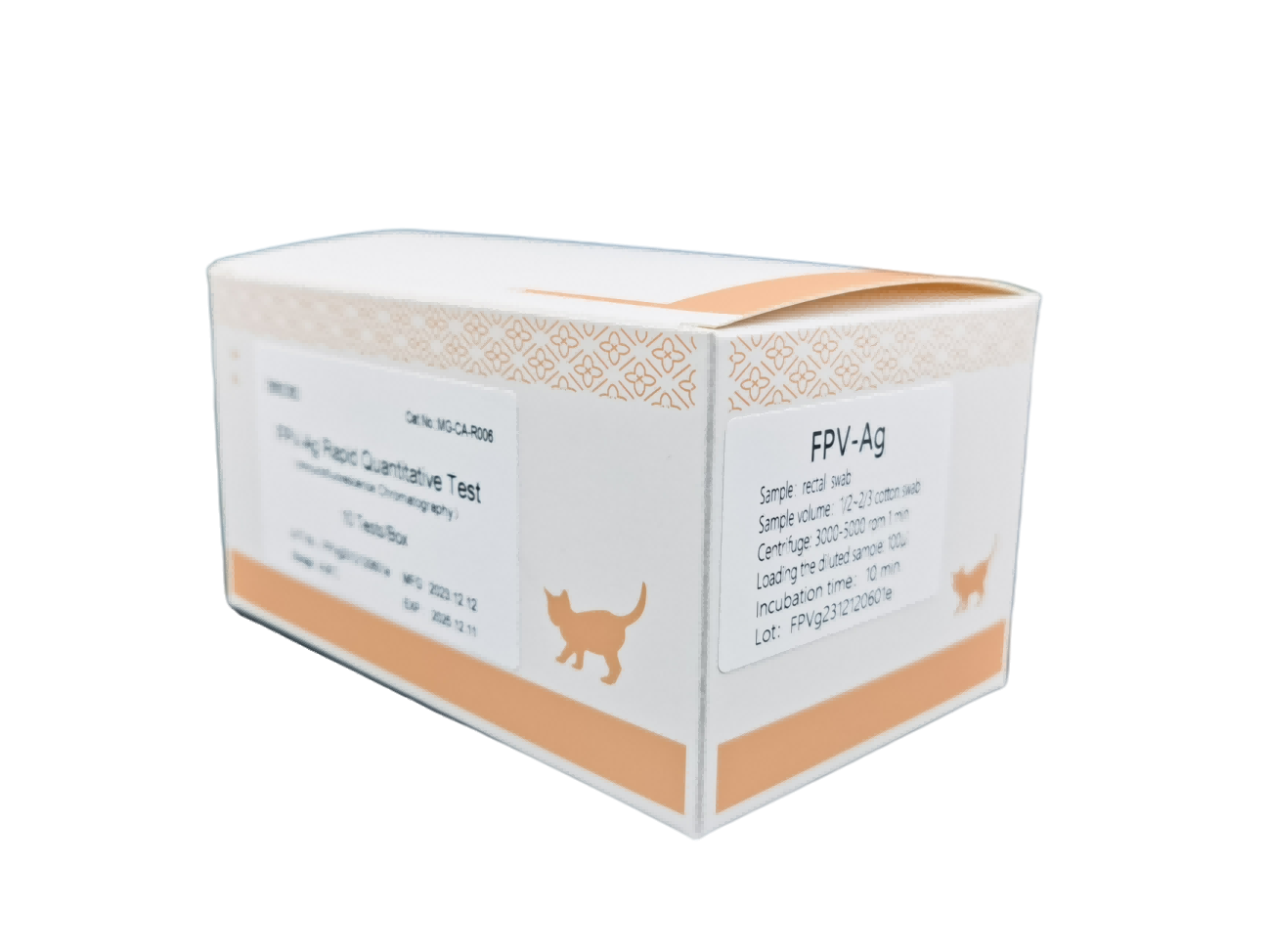



Key attributes

Test Quantity: 10 Tests/Box
Catalog Number: MG-CA-R015
The fPL test is a fluorescence immunoassay designed for use with an Immunofluorescence Analyzer to quantitatively measure pancreatic lipase levels in feline serum or plasma. It aids in diagnosing and monitoring pancreatic lipase concentration in felines.
Note: For in vitro diagnostic use only. For professional use only.
This test employs a quantitative double antibody sandwich fluorescence immunoassay technique.
The intensity of the fluorescent signal corresponds to the amount of fPL captured, with the concentration expressed in Tu/ml.
Materials Provided
Each box contains:
10 individual sealed pouches, each containing:
A Test Device
A desiccant pouch
One ID Chip
Instructions for Use
10 cotton swabs
10 tubes of fPL Sample Buffer
10 Pipette tips
Materials Required But Not Provided
Immunofluorescence Analyzer
Timer
Pipette
Centrifuge
Store the test kit at 4~30℃ until the expiration date.
Operate the test between 18 ~ 28℃ after opening the Test Device.
Perform the test within 30 minutes of opening the pouch.
The test can be conducted using serum or plasma (EDTA anticoagulant is recommended).
Separate serum or plasma from blood within 3 hours of collection.
If the specimen appears severely hemolyzed, collect a new sample.
Perform the test immediately after specimen collection. If not possible, store the specimen at 2~8℃ for up to 72 hours. For long-term storage, keep specimens below -20℃.
Bring all materials to room temperature before testing. Thaw frozen specimens completely and mix well. Avoid repeated freezing and thawing. Use only clear, non-hemolyzed specimens.
Refer to the Immunofluorescence Analyzer Operation Manual for detailed instructions.
Place the Test Device on a clean, level surface.
Insert the ID Chip into the meter and select "Read ID chip." Ensure the Test Device lot number matches the ID Chip number.
Pipette 50 μl of prepared sample into the fPL Sample Buffer, and mix gently to avoid vigorous agitation and foaming.
Pipette 100 μl of the mixed sample into the sample well of the Test Device, avoiding bubbles.
Test Mode Options:
Standard Test: Click "Standard Test," insert the Test Device into the device holder immediately, and click "Start Test." The meter will automatically countdown and display the test result.
Quick Test: Click "Quick Test," start the timer immediately after adding the sample mixture, and leave the Test Device at room temperature (18 ~ 28℃) for 15 minutes. Then, insert the Test Device into the meter holder and click "Start Test." The instrument will automatically scan the device and display the result.
Results are displayed on the main screen and can be printed automatically or manually by selecting "Print."
Each fPL Rapid Quantitative Test includes an internal control for routine quality assurance. This internal control is checked every time a patient sample is tested. If the internal control returns an invalid result, an error message will display, indicating the need for a retest.
Detection range: 2.0 ~ 224 ng/ml
Reference Range:
≤ 3.5 ng/ml: Low risk
3.5 - 5.3 ng/ml: Medium risk
> 5.3 ng/ml: High risk
Note: Each laboratory should establish a reference range based on the specific population being evaluated.
For in vitro diagnostic use only.
Inspect packaging and labels before use. Do not use if the pouch is damaged, not well sealed, or if the vial is damaged or leaking.
Do not use the test device beyond the expiration date.
Use a separate pipette tip for each specimen.
Be aware that technical or procedural errors, as well as unlisted substances in blood specimens, may interfere with the test and lead to erroneous results.
